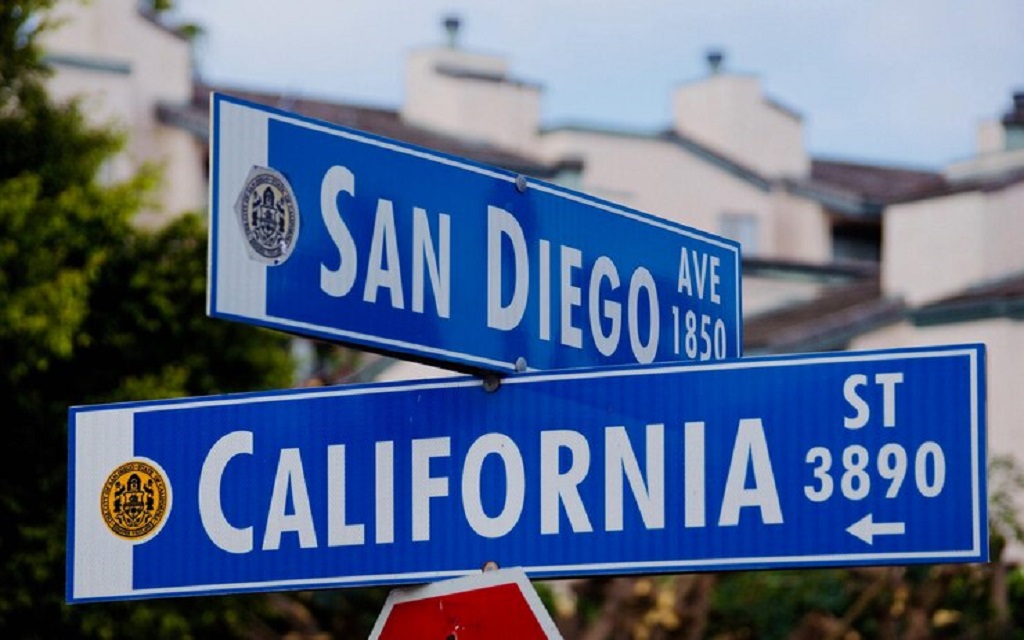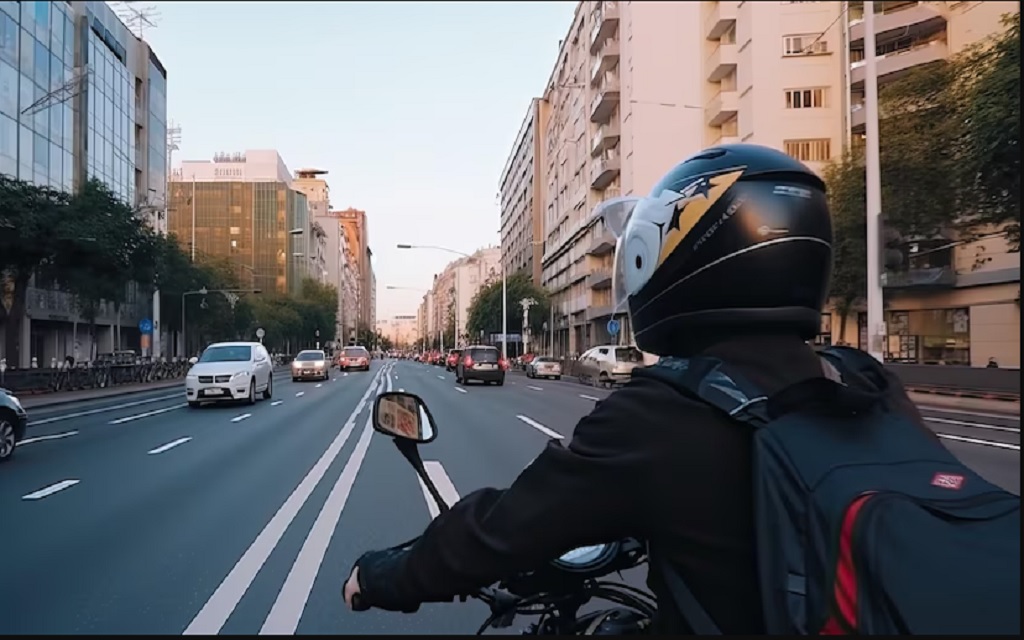California is a unique place, particularly when it comes to motorcycle laws. Did you know it is the only country that legally allows lane splitting? This is the practice of riding between traffic lanes that are either stopped or moving slowly.
What information should motorcyclists and other drivers know, and how does it work? This article will explore all the information you require regarding lane splitting in California.
What Is Lane Splitting?

So, what exactly is lane splitting? Lane splitting is riding a bike or motorbike between rows or lanes of stationary or slow-moving traffic traveling in the same direction. It is also known as stripe-riding or white lining. It allows bikers to ride between lanes to avoid backed-up time and traffic. Have you ever wished you could go faster while stuck in traffic?
Lane splitting provides this opportunity, allowing riders to avoid lengthy delays during peak hours. California law has formally acknowledged this practice since 2016, but its origins in rider behavior go back much further.
The Legal Framework
Understanding the legal framework surrounding lane splitting is essential. What are the primary components of California’s lane-splitting laws? Here are the key points to remember:
- Legal Conditions: Lane splitting is allowed when traffic moves at 30 mph or less. Did you know motorcyclists can also lane split when traffic is stopped? This aspect is crucial for understanding the law.
- Guidelines for Safe Splitting: Riders should not exceed 10 mph over traffic flow while lane splitting. Isn’t that a reasonable approach to keep everyone safe?
- No Designated Lanes: The law does not specify particular lanes for splitting. Motorcyclists can choose the lanes they deem safest. But how do they know which lanes are best?
Safety Tips for Lane Splitting
Safety remains the top priority for motorcyclists. What are some tips to ensure a safe lane-splitting experience? California Highway Patrol (CHP) recommends the following:
- Stay Aware: Always scan the road and anticipate the movements of surrounding vehicles. Have you noticed how other drivers may not expect motorcycles to split lanes?
- Use Headlights: Riding with your headlights on is crucial. This simple action significantly increases visibility to other drivers. Why not make yourself as visible as possible?
- Maintain a Safe Speed: Moderate speed is essential. Aim for a maximum of 10 mph faster than surrounding traffic. This speed helps prevent sudden stops or collisions. Doesn’t it make sense to keep things steady?
- Avoid Blind Spots: Steering clear of larger vehicles is wise. Trucks and SUVs have large blind spots that can hide smaller motorcycles. What happens when a driver can’t see you?
- Choose Your Position Wisely: Position yourself between attentive vehicles when lane splitting. Avoid cramped or crowded spaces. Where do you feel safest on the road?
The Benefits of Lane Splitting
Why should motorcyclists consider lane splitting? This practice offers several advantages that can enhance the riding experience:
- Decreased Traffic Congestion: Lane splitting relieves traffic congestion on busy highways. Motorbike riders, by navigating through traffic, help to improve traffic flow. Can you imagine a world where everyone benefits from this?
- Faster Travel Times: Travellers frequently arrive at their destinations more quickly. Who would not want to cut down on time while stuck in a traffic jam?
- Improved Safety: Research suggests that lane splitting may lessen the likelihood of rear-end collisions. Motorcyclists are particularly vulnerable when backed up in traffic. Is knowing this risk can be reduced with lane splitting not consoling?
Common Misconceptions About Lane Splitting
Many myths surround lane splitting. What are some misconceptions that might confuse riders? Let’s address these:
- “Lane Splitting Is Dangerous”: Contrary to popular belief, studies indicate that lane splitting does not necessarily increase accident risk. Riders who lane split often have lower accident rates. Isn’t that surprising?
- “Lane Splitting Is Illegal”: Despite popular belief, lane splitting is legal in California. How many people are not aware of this fact?
- “Only Experienced Riders Can Lane Split”: Although it takes skill, experienced riders are not the only ones who can do it. New riders can learn safe practices with proper training. Wouldn’t it be great to see more riders confidently lane-splitting?
Lane Splitting and Insurance
How does lane splitting affect insurance coverage? Here are some important considerations:
- Communicate with Your Insurer: Always inform your insurance provider about your riding practices, including lane splitting. Isn’t it better to be upfront and ensure appropriate coverage in case of an incident?
- Understand Your Policy: Some insurance policies may have specific clauses regarding lane splitting. Familiarizing yourself with your coverage is essential for your protection. Have you checked your policy lately?
Lane Splitting: The Experience
What’s it like to ride a motorcycle and lane split? It can be thrilling! Highway freedom and the thrill of weaving through traffic are two things that riders frequently enjoy. However, it is essential to prioritize awareness and safety. The experience becomes more pleasurable as a rider gains confidence. Doesn’t that sound good?
Conclusion
In short, California’s lane-splitting law offers riders a unique chance to motorcyclists safely through crowded areas. All road users must understand the safety regulations, legal requirements, and advantages of lane splitting. Both motorcyclists and drivers need to be aware of their responsibilities. How do we promote an awareness- and respect-driven driving culture? If everyone has the same understanding, California can remain a fun and safe driving place.
Frequently Asked Question(s)
Is Lane Splitting Legal in CA?
Sure, but only for those who ride motorcycles. To avoid a possible rear-end collision, a motorbike rider may split the lane to pass between slower-moving traffic lanes. Additionally, two motorbike riders may travel in the same lane, making them more visible to other motorists in certain circumstances- particularly at night.
How Fast Can You Lane Split?
To successfully lane split, a motorcyclist will likely need to move faster than adjacent lanes of slower-moving traffic. State lawmakers recommend going no more than 10 mph faster than the vehicles on either side. Additionally, motorcyclists should avoid splitting lanes in traffic, moving faster than 30 mph.
Can You Lane Split on the Highway?
Lane splitting on highways is technically legal in the state. But you should only do this very carefully and when necessary. Although lane splitting by motorcycle riders is legal, it is advised that drivers refrain from doing so in areas where traffic is moving more quickly than 30 mph, such as most highway traffic.
Why Is Lane Splitting Allowed by the State?
Many lawmakers view lane splitting as reckless, even though they have conceded the arguments put forth by proponents of the practice. They make the point that, in some situations, lane splitting can improve traffic flow and keep motorcyclists safer. Motorcycle riders can prevent collisions with oncoming traffic by lane splitting. It is also believed that lane splitting helps lessen traffic congestion, which is notoriously severe in cities.
What Remains After an Accident Caused by a Lane-Split?
The state decides vehicle accident cases under the fault rule, so proving fault is a requirement before any accident can result in compensation. You must obtain reliable legal counsel if involved in a lane-splitting accident. To find out who caused the collision and make the negligent driver pay for the harm they caused, consult an expert lawyer.
Ultimately, splitting lanes is permitted in California as long as it is done safely. Accident victims who were hurt in collisions due to irresponsible lane splitting or for any other cause should be aware of their legal rights to damages and how to hold those at fault.
Disclaimer: Judicialocean provides this post for informational purposes only. You can obtain the necessary reimbursement and comprehend your options with the assistance of a legal professional.




